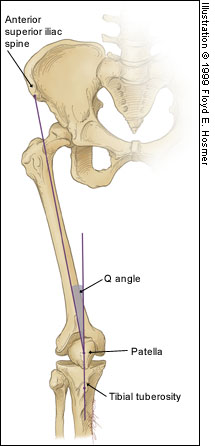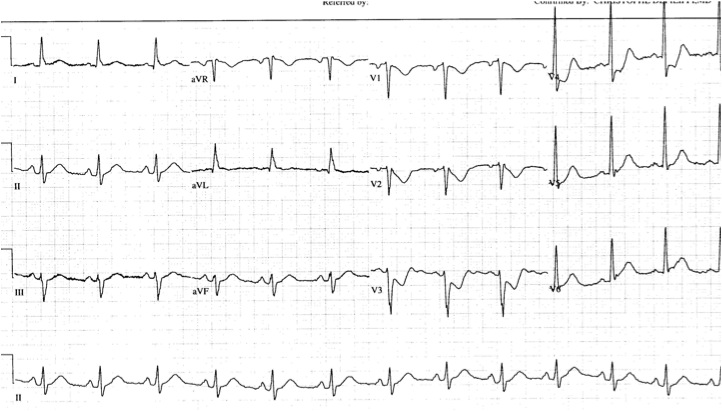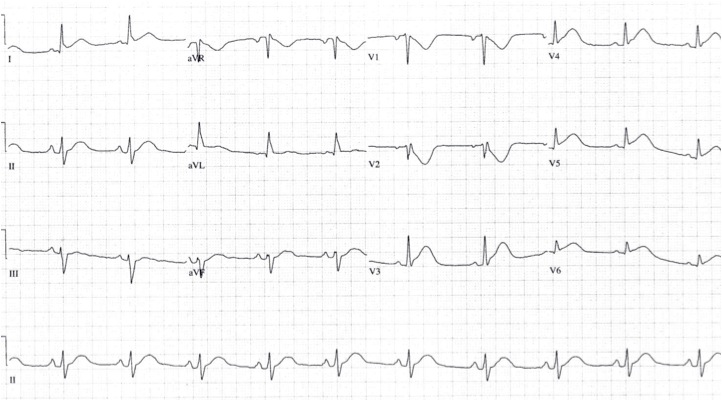Category: Critical Care
Keywords: asthma, heliox, airway (PubMed Search)
Posted: 10/12/2010 by Haney Mallemat, MD
(Updated: 12/5/2025)
Click here to contact Haney Mallemat, MD
Heliox is a mixture of oxygen and helium resulting in a gas less dense than air. In asthma, airway resistance causes turbulent airflow which increases the work of breathing. Heliox reduces airway resistance by increasing laminar airflow.
Benefits:
Better lung mechanics
Improved nebulizer delivery
Few known side-effects/complications
Drawbacks:
Expensive
Contraindicated in hypoxemic patients.
Paucity of large prospective randomized trials.
McGarvey JM, Pollack CV. Heliox in Airway Management. Emerg Med Clin North Am. 2008 Nov;26(4):905-20, viii.
Category: Orthopedics
Keywords: joint, documentation, physical examination (PubMed Search)
Posted: 10/9/2010 by Brian Corwell, MD
(Updated: 12/5/2025)
Click here to contact Brian Corwell, MD
Previous pearls have described tips for smart and safe documentation of typical ED complaints such as chest pain. Properly assessing and documenting orthopedic complaints is likewise very important. No evaluation or chart is complete if it does not include include the following 7 components:
The joint above
The joint below
Motor
Sensory
Vascular
Skin
Compartments
The joint above/below is important in cases of shoulder and hip pain actually being radicular pain (from the neck and back respectively). Also, hip pain from trauma may be due to a femur fracture for example.
For motor and sensory evaluation, test the most distal isolated innervation of a particular nerve (L5 - great toe dorsiflexion for example).
Note distal pulses and check ABIs for injuries with potential subtle vascular findings.
Note intact skin especially in cases where the joint will be covered by a splint.
Note "soft" compartments especially in cases of forearm and lower leg fractures.
Category: Critical Care
Keywords: endotracheal intubation, medication, acls, resuscitation (PubMed Search)
Posted: 10/7/2010 by Ellen Lemkin, MD, PharmD
Click here to contact Ellen Lemkin, MD, PharmD
EMS in Maryland has REMOVED endotracheal medication administration from its ADULT protocols
This is due to:
Category: Neurology
Keywords: diplopia, cranial nerve palsy, monocular diplopia, binocular diplopia (PubMed Search)
Posted: 10/6/2010 by Aisha Liferidge, MD
(Updated: 12/5/2025)
Click here to contact Aisha Liferidge, MD
Category: Critical Care
Posted: 10/5/2010 by Mike Winters, MBA, MD
(Updated: 12/5/2025)
Click here to contact Mike Winters, MBA, MD
Respiratory Distress in the Ventilated ED Patient
Santanilla JI, Daniel B, Yeow ME. Mechanical ventilation. Emerg Med Clin N Am 2008;26:849-862.
Category: Med-Legal
Keywords: chest pain (PubMed Search)
Posted: 10/4/2010 by Rob Rogers, MD
(Updated: 12/5/2025)
Click here to contact Rob Rogers, MD
Chest pain is a very high risk chief complaint in emergency medicine. And although we are told by the experts what we should write on the chart, we often struggle with finding time to do so.
Given that we can't pick up every MI, dissection, and PE, what things can we document in the chart that prove we are thorough and that we have thought about a diagnosis? And how can we document a "protective thought process" without taking too much time to do so?
Consider documenting these on your chest pain charts:
Documenting key pertinent negative comments in the chart shows that you are thinking (and considering MI, Aortic Dissection, and PE), and whenever this can be shown in a chart, there is more ammunition for the defense attorney.
Category: Cardiology
Keywords: oxygen, acute myocardial infarction (PubMed Search)
Posted: 10/3/2010 by Amal Mattu, MD
Click here to contact Amal Mattu, MD
The traditional teaching has always been to use supplemental high-flow oxygen routinely for patients with acute MI. I recall specifically being taught in residency by EM, IM, and cardiology attendings that every acute MI patient should receive a minimum of 6 liters of supplemental oxygen via nasal canula, if not 100% oxygen, regardless of the initial pulse oximetry.
Mounting evidence, however, is demonstrating that the use of supplemental oxygen in patients that are "normoxic" (i.e. the production of "hyperoxia") is detrimental. Studies are demonstrating that there is no improvement in mortality or prevention of dysrhythmias; and in fact a trend towards increased mortality when patients are hyperoxic. This detrimental effect is likely the result of coronary vasoconstriction which occurs through several different mechanisms, all induced by hyperoxia. Oxygen, it turns out, is a vasoactive substance.
The takeaway point is very simple: if an AMI patient is not hypoxic, don't go overboard with the supplemental oxygen!
[Moradkhan R, Sinoway LI. Revisiting the role of oxygen therapy in cardiac patients. J Am Coll Cardiol 2010;56:1013-1016.]
Category: Orthopedics
Keywords: Patellofemoral syndrome (PubMed Search)
Posted: 10/2/2010 by Michael Bond, MD
Click here to contact Michael Bond, MD
Patellofemoral Syndrome (Chondromalacia Patella)

Juhn MS et al. Patellofemoral pain syndrome: a review and guidelines for treatment. Am Fam Physician. (1999)
Category: Pediatrics
Keywords: SCFE, slipped capitofemoral epiphysis (PubMed Search)
Posted: 10/1/2010 by Adam Friedlander, MD
Click here to contact Adam Friedlander, MD
Slipped capito-femoral epiphysis (SCFE) is a favorite board exam topic, and typically involves a young early or pre-adolescent obese girl with hip pain and the classic "ice cream falling off the cone" appearance on hip radiographs. However, keep these three pearls in mind when thinking about SCFE:
Marianne Gausche-Hill, MD, FACEP, Challenging Cases in Pediatric Emergency Medicine, ACEP Scientific Assembly, 2010
Category: Toxicology
Keywords: amnestic, neurotoxic, paralytic, shellfish (PubMed Search)
Posted: 9/30/2010 by Fermin Barrueto
Click here to contact Fermin Barrueto
Although we may not be able to eat as much shellfish after the oil spill, there are still some left that can cause some interesting toxicity here in the USA. Shellfish act as vectors for the bacteria, virus etc that produces toxin thus not specific to one species of shellfish. There is a map attached that shows where shellfish poisoning occurs most. In the picture CFP=ciguatera, PSP=Paralytic and ASP=AmnesticC. Surprising the distribution and it will be interesting how the oil spill affects the distribution. Treatment for all of these is supportive with no known antidote and incidence increases during Red Tide months:
Category: Neurology
Keywords: chlorhexidine, arachnoiditis, lumbar puncture, neurotoxicity (PubMed Search)
Posted: 8/27/2010 by Dan Lemkin, MS, MD
(Updated: 9/29/2010)
Click here to contact Dan Lemkin, MS, MD
Chlorhexidine (CHG) has rapidly become the antiseptic of choice for most skin preparation prior to any percutaneous procedures including:
The Chlorprep(R) label notes: "DO NOT USE FOR LUMBAR PUNCTURE OR IN CONTACT WITH THE MENINGES" (attached)
Authors of the British Royal College of Anaesthetists 3rd National Audit Project provided some guidance for the use of chlorhexidine for spinal procedures
Further: Correspondance from the Journal of Regional Anesthesia and Pain Medicine
"Dr. David Hepner published a correspondence in the April 2007 issue of Anesthesiology that stated the expert panel for Regional Anesthesia and Pain Medicine “felt strongly that although the US Food and Drug Administration has not approved chlorhexidine before lumbar puncture, it has a significant advantage over povidone iodine because of its onset, efficacy, and potency” and commented that “interestingly, povidone iodine is also not approved for lumbar puncture."
Chlorhexidine off-label use is supported in academic literature. Due to specific labeling prohibiting use, a formal institutional policy to support such use may be indicated.
Cook TM, Fischer B, Bogod D, et. al. Antiseptic solutions for central neuraxial blockade: which concentration of chlorhexidine in alcohol should we use? British Journal of Anaesthesia.2009. 103(3):456-457
http://bja.oxfordjournals.org/cgi/content/extract/103/3/456
http://www.apsf.org/newsletters/html/2008/fall/02_ltrchlorprep.htm
http://www.apsf.org/newsletters/html/2008/fall/10_fdaquest.htm
Category: Critical Care
Keywords: HAART HIV AIDS Critical illness (PubMed Search)
Posted: 9/27/2010 by Haney Mallemat, MD
(Updated: 9/28/2010)
Click here to contact Haney Mallemat, MD
While you should always involve ID consultants when managing critically-ill HIV/AIDS patients on HAART, consider this; sub-therapeutic levels of anti-retrovirals may promote HIV resistance, potentially invalidating a class of drug for future use. Therefore, it may be advantageous to discontinue the drug(s) during critical-illness to avoid resistance.
Two examples leading to sub-therapeutic HAART levels in critical-illness:
Current issues in critical care of the human immunodeficiency virus-infected patient. Morris A, Masur H, Huang L Crit Care Med. 2006 Jan;34(1):42-9.
Category: Cardiology
Keywords: electrocardiography, posterior, myocardial infarction (PubMed Search)
Posted: 9/26/2010 by Amal Mattu, MD
(Updated: 10/3/2010)
Click here to contact Amal Mattu, MD
Approximately 4% of acute MIs will present as an isolated posterior MI (AKA "true posterior MI"). These are easily misdiagnosed as simply anterior ischemia because of the ECG findings. However, the distinction is critically important because posterior STEMI is now considered an indication for immediate reperfusion (PCI or lytics), whereas anterior ischemia is not.
The diagnosis of posterior STEMI is made by looking for:
1. ST segment depression, typically in leads V1-V3
2. upright T-waves in leads V1-V3
3. development of tall R-waves (R > S in amplitude) in V1-V3 over the course of a few hours (this is analogous to Q-waves forming in the posterior portion of the ventricle)
Early on, you may not be able to rely on the presence of tall R-waves to help you. Therefore, it's best to simply do the following: whenever you find ST-segment depression in leads V1-V3, always repeat the ECG using posterior leads (simply place a couple of the V leads on the left mid-back area). These leads will "look" directly at the posterior heart. If those leads show ST elevation, the diagnosis is posterior STEMI. If those leads don't show ST elevation, you can then make the diagnosis of simply anterior ischemia and hold off on immediate PCI or lytics.
The first ECG below shows ST depression in the anteroseptal leads, suspicious for posterior STEMI. The ECG was then repeated, second ECG, with leads V3-V6 placed wrapping around to the left mid-back area. The ST elevation in these leads confirmed the presence of a posterior STEMI and justified immediate reperfusion therapy.


Category: Orthopedics
Keywords: Thumb, Gamekeeper's thumb, Skier's thumb (PubMed Search)
Posted: 9/25/2010 by Brian Corwell, MD
(Updated: 9/28/2010)
Click here to contact Brian Corwell, MD
Injury was originally described as an occupational hazard in Scottish gamekeepers (from breaking the necks of rabbits against the ground). Today, skiing is now the most common cause and injury is now the second most common orthopedic injury in skiers (MCL injury #1).
Injury to the ulnar collateral ligament (UCL) results from a sudden forced abduction (radial deviation) stress at the MCP joint of the thumb, commonly due to a fall against a ski pole or the ground.

http://blog.fitter1.com/wp-content/uploads/2010/04/b_14_1_2a.jpg
The most frequent site of rupture is the insertion into the proximal phalanx. The UCL may even avulse a small portion of the proximal phalanx at its insertion site.

http://img.medscape.com/pi/emed/ckb/sports_medicine/84611-97564-98460-1652013.jpg
Consider imaging before stress testing (to avoid further displacing a fracture)

http://img.medscape.com/pi/emed/ckb/sports_medicine/84611-97564-98460-1652060.jpg
Stabilize in a thumb spica splint and refer to hand surgery.
Calling this entity a “simple sprain” may result in chronic disability (chronic pain, instability, loss of pinch strength)
http://emedicine.medscape.com/
Category: Neurology
Keywords: ulnar nerve, median nerve, radial nerve (PubMed Search)
Posted: 9/22/2010 by Aisha Liferidge, MD
(Updated: 2/22/2011)
Click here to contact Aisha Liferidge, MD
Category: Critical Care
Posted: 9/21/2010 by Mike Winters, MBA, MD
(Updated: 12/5/2025)
Click here to contact Mike Winters, MBA, MD
Life-threatening Bleeding in Hemophilia A Patients
Singleton T, Kruse-Jarres R, Leissinger C. Emergency department care for patients with Hemophilia and Von Willebrand Disease. JEM 2010; 39:158-65.
Category: Vascular
Keywords: Pulmonary Embolism, IVC Filter (PubMed Search)
Posted: 9/20/2010 by Rob Rogers, MD
(Updated: 12/5/2025)
Click here to contact Rob Rogers, MD
Pulmonary Embolism and IVC Filters
Inferior vena cava filters are placed in patients with massive DVT and /or in patients who cannot receive systemic anticoagulation.
The question is, can patients develop pulmonary embolism if a filter is already in place? The answer: yes
How does this happen?:
Category: Geriatrics
Keywords: erythrocyte sedimentation rate, sed rate, temporal arteritis (PubMed Search)
Posted: 9/19/2010 by Amal Mattu, MD
(Updated: 12/5/2025)
Click here to contact Amal Mattu, MD
There is a correction factor for erythrocyte sedimentation rate in the elderly. The top normal ESR in the elderly is (age + 10)/2. For example, an 80 yo patients would have a top normal ESR of (80+10)/2 = 45. Most laboratories do not, however, report this correction factor, but simply list < 20 (or thereabouts) as normal.
Be certain to take this correction factor into account when using ESRs for workups for temporal arteritis or other similar conditions.
Category: Orthopedics
Keywords: Pain, Geriatrics (PubMed Search)
Posted: 9/18/2010 by Michael Bond, MD
(Updated: 12/5/2025)
Click here to contact Michael Bond, MD
Pain Control in the Elderly
So the take home lesson for this pearl is that the elderly have a lower risk of delirium if their pain is treated appropriately.
Duggleby W, Lander J: Cognitive status and postoperative pain: older adults. J Pain Symptom Manage 1994; 9: 19-27.
Lynch EP, Lazor MA, Gellis JE, Orav J, Goldman L, Marcantonio ER: The impact of postoperative pain on the development of postoperative delirium. Anesth Analg 1998; 86: 781-785.
Category: Toxicology
Keywords: fentanyl (PubMed Search)
Posted: 9/16/2010 by Fermin Barrueto
(Updated: 9/18/2010)
Click here to contact Fermin Barrueto
A fentanyl patch contains 100-fold more fentanyl in the reservoir than what is posted on the patch. For instance, 100mcg/hr patch will have over 10mg - thats milligrams - of fentanyl. This provides a rather large source for potential abuse. Overdose and deaths have occurred by patients in the following ways:
It is the many
